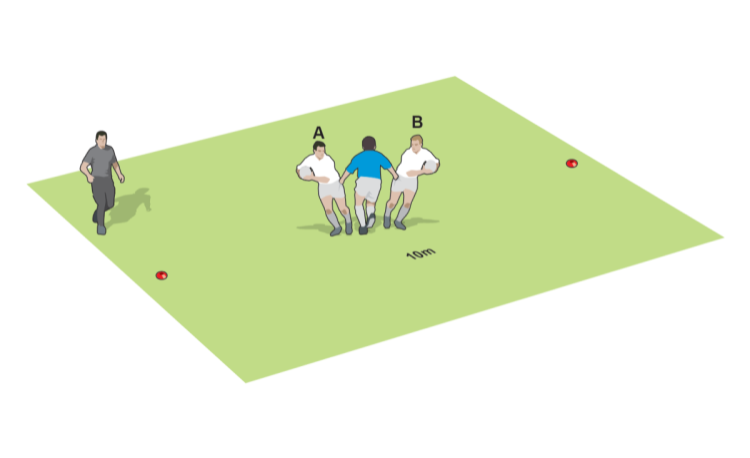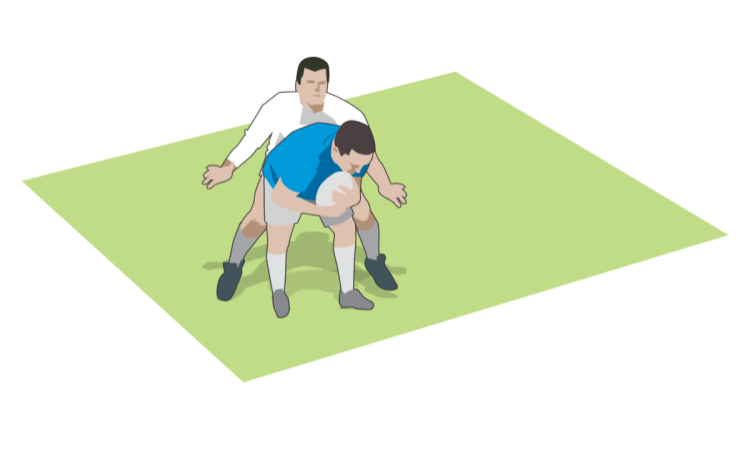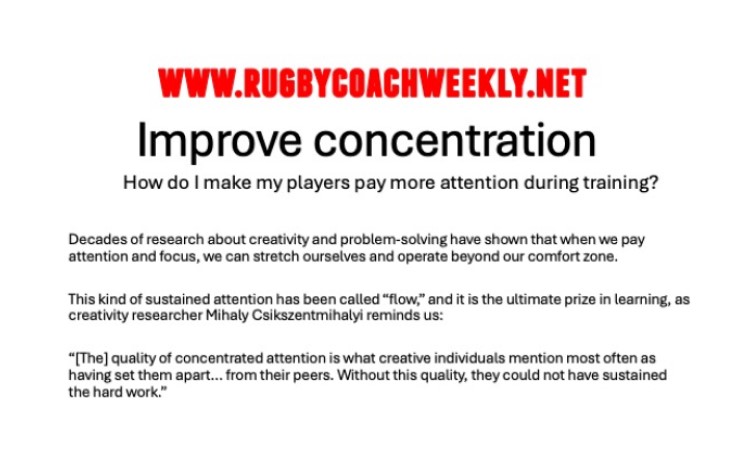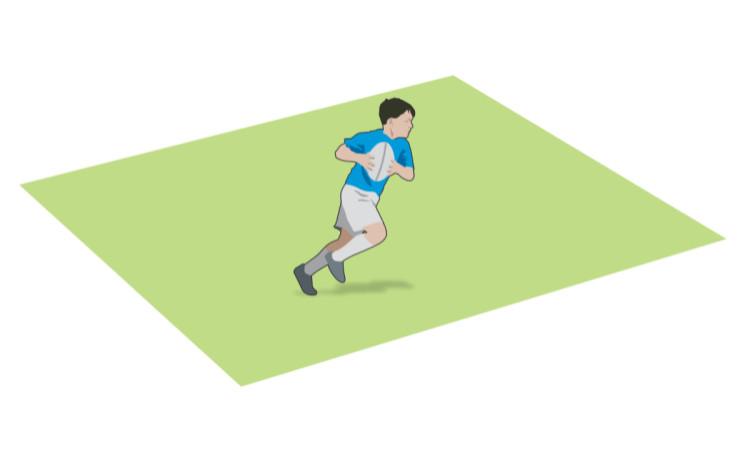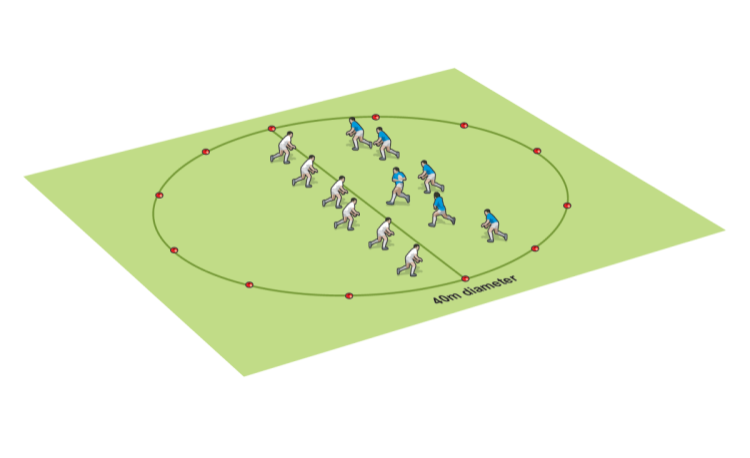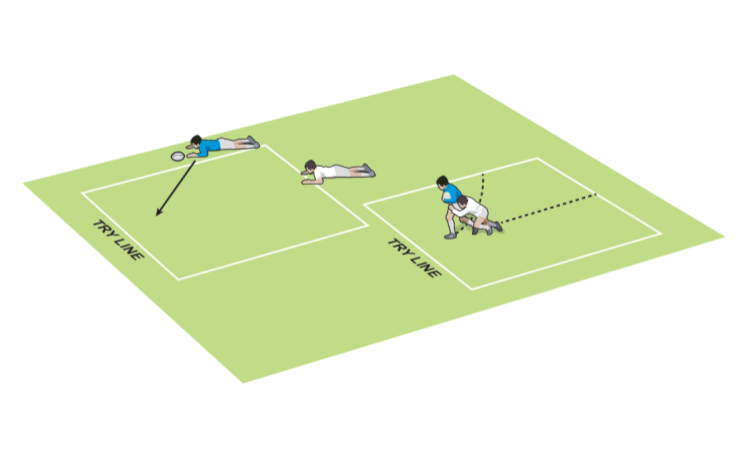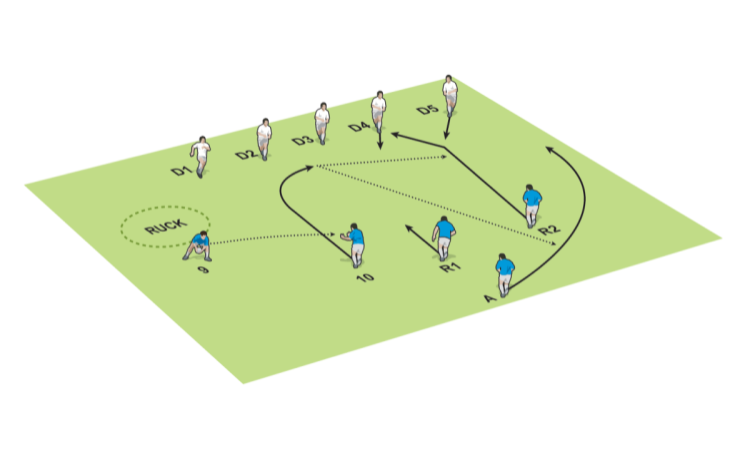You are viewing
1 of your 2 free articles
Contact confidence - ball placement
Contactby Dan Cottrell
Contact confidence is one of the most difficult things to teach young players because they have different approaches. Work on falling onto the ground and keeping control of the ball.
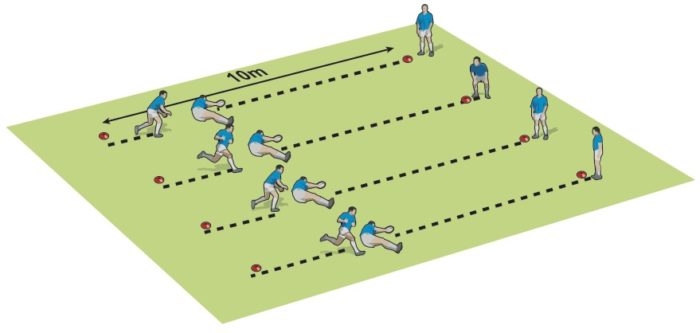
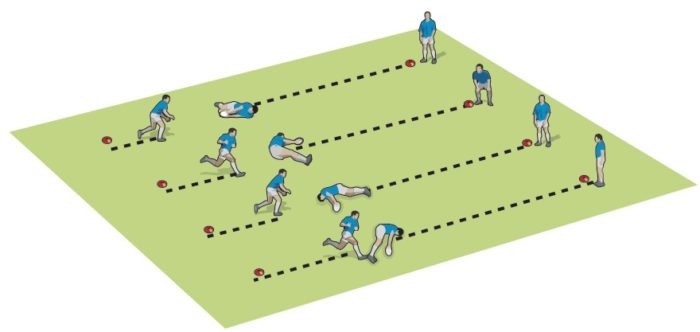
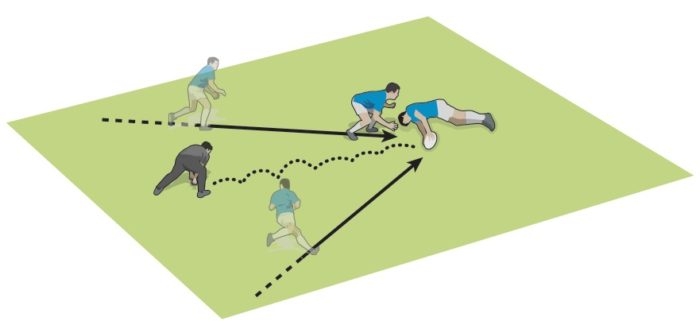
If a player is comfortable falling to the ground after a tackle or onto a loose ball it will give him the confidence to fall as he will know what the outcome will be.
Eight cones in two lines of four. The cones are placed in 2m lines, 10m apart. A player on each cone, four balls.

- The first group of players jog out and fall to the ground, placing the ball
- The next group moves forward to pick up the ball and they go forward and repeat
- Start at jogging pace and build up the speed as players become more confident. Ask players to carry the ball in either hand or both.

- Develop by asking the players to fall on either side or on their front/back BEFORE placing the ball back

- Have a competition between two players
- The first player who gets to the ball must fall on it and place it correctly
WHY USE IT
If a player is comfortable falling to the ground after a tackle or onto a loose ball it will give him the confidence to fall as he will know what the outcome will be.
SET UP
Eight cones in two lines of four. The cones are placed in 2m lines, 10m apart. A player on each cone, four balls.
HOW TO DO IT
- Four players jog 7m with a ball.
- They fall and present the ball back and the four players at the other end run out and pick it up, repeating the exercise in the opposite direction for the next line of four players (see picture 1).
- This can be developed by getting the players to fall at different angles but still presenting the ball back (see picture 2).
- Once players are happy with ground contact, get them to race in pairs to a ball, fall on it and place it correctly (see picture 3).
TECHNIQUE
- Start off jogging or walking, then falling down and presenting the ball before building up to running at pace.
- Once confident falling and presenting, the ball can be held in left, right or two hands.
- If the ground is too hard don’t do it as it will not work and it will affect confidence.
Newsletter Sign Up
Coaches Testimonials

Gerald Kearney, Downtown Las Vegas Soccer Club

Paul Butler, Florida, USA

Rick Shields, Springboro, USA

Tony Green, Pierrefonds Titans, Quebec, Canada
Subscribe Today
Be a more effective, more successful rugby coach
In a recent survey 89% of subscribers said Rugby Coach Weekly makes them more confident, 91% said Rugby Coach Weekly makes them a more effective coach and 93% said Rugby Coach Weekly makes them more inspired.
Get Weekly Inspiration
All the latest techniques and approaches
Rugby Coach Weekly offers proven and easy to use rugby drills, coaching sessions, practice plans, small-sided games, warm-ups, training tips and advice.
We've been at the cutting edge of rugby coaching since we launched in 2005, creating resources for the grassroots youth coach, following best practice from around the world and insights from the professional game.
More from us
© 2023 Rugby Coach Weekly
Part of Green Star Media Ltd. Company number: 3008779
We use cookies so we can provide you with the best online experience. By continuing to browse this site you are agreeing to our use of cookies. Click on the banner to find out more.




